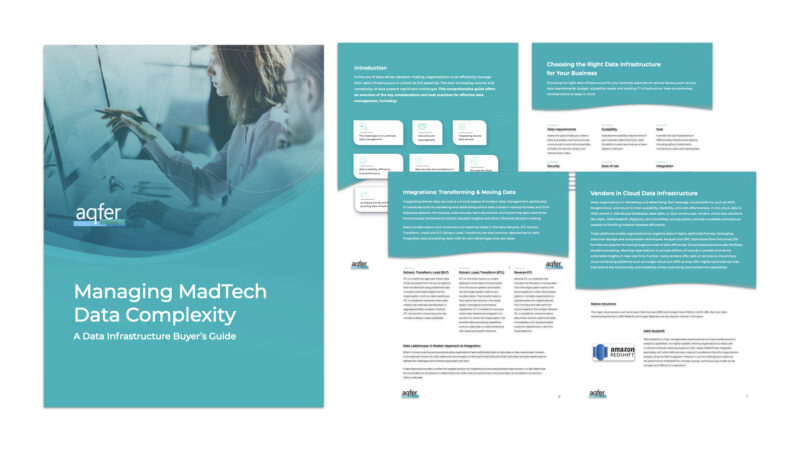In today’s fast-paced MadTech landscape, product managers and chief product officers are constantly grappling with the question of when to migrate their on-premises systems to the cloud. While the benefits of cloud computing are well understood, the timing of this critical transition can make or break a company’s success.
The right time to migrate to the cloud depends on several factors unique to each organization. Read on to explore the factors to consider before migrating to a cloud-based infrastructure.
The Current State of Your On-Premises Infrastructure
First and foremost, it’s essential to assess the current state of your on-premises infrastructure. If your systems are reaching end-of-life, struggling to keep up with increasing data volumes, or requiring significant time and resources for upgrades, it’s a clear sign that the time for cloud migration has come.
Assessing Growth Needs
Moreover, if your company is experiencing rapid growth or needs to scale quickly to meet demand, moving to the cloud can provide agility and flexibility to accommodate these changes. Cloud platforms offer the ability to easily spin up new resources, handle spikes in traffic, and scale down when demand subsides, ensuring that your systems can keep pace with your business growth.
Understanding Customer Expectations
Another critical factor to consider is the evolving needs of your customers. In today’s digital landscape, customers expect seamless, personalized experiences across multiple channels. Cloud-based solutions enable companies to leverage advanced analytics, machine learning, and real-time data processing to deliver targeted, data-driven experiences that meet these expectations. If your on-premises systems are hindering your ability to innovate and provide cutting-edge solutions to your customers, it’s time to consider the cloud.
Cross-Functional Management of Your Cloud Migration
It’s crucial to approach cloud migration strategically and with careful planning, as it requires the input of multiple teams on the technical and customer-facing sides of the business. From managing the technical requirements of the migration to managing customer expectations during the migration process, product leaders must work closely with internal stakeholders to minimize disruptions to the business.
Product leaders should work closely with their IT teams to assess the readiness of their applications for the cloud, develop a phased migration plan, and ensure that proper security and compliance measures are in place. This process may involve re-architecting certain applications, investing in staff training, and establishing clear governance and monitoring frameworks.
Ready to Upgrade Your Infrastructure?
The right time to migrate on-premises systems to the cloud is when your current infrastructure is no longer meeting your business needs, hindering your ability to innovate, or preventing you from delivering exceptional customer experiences. By carefully evaluating your organization’s unique requirements and approaching migration with a strategic mindset, product leaders can unlock the full potential of cloud computing and position their companies for long-term success.
When you’re considering making a major change to your data infrastructure, be sure to consult our Data Infrastructure Buyer’s Guide. This guide includes a complete analysis of data infrastructure types, vendors in the space and the top questions your company should evaluate before making the change. Click here to download the guide, or simply fill out the form below.


